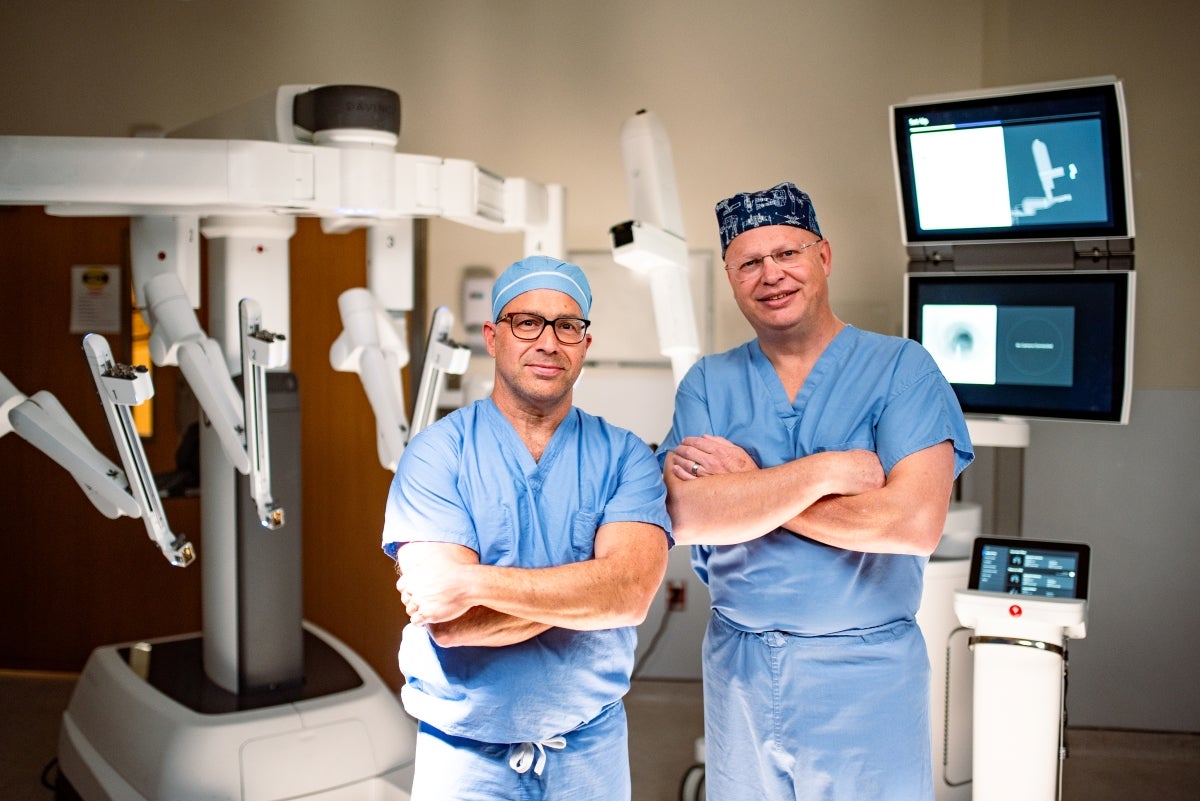
Advanced chest and lung care in Nashville
-
Thoracic cancers
- Lung cancer
- Esophageal cancer
- Thymic carcinoma
- Chest wall cancers
- Carcinoid tumors
-
Tumors of the mediastinum and thymus gland
- Lipoma
- Neuroendocrine tumor
- Pericardial cyst
- Thymic carcinoma
- Thymic cyst
- Thymoma
-
Lung masses and nodules
Abnormal growths in the lungs can be benign (non-cancerous) or malignant (cancerous). Even though most lung nodules are not cancerous, thoracic surgeons specialize in diagnosing and monitoring changes in the lung nodules.
-
Complex airway disorders
- Malignant obstructions
- Endobronchial tumors
- Recurrent respiratory papillomatosis
- Idiopathic subglottic stenosis
- Tracheal or bronchial stenosis
- Granulomatosis with polyangiitis (formerly called Wegener's granulomatosis)
- Tracheobronchomalacia
- Relapsing polychondritis
- Tracheoesophageal fistulas
- Airway foreign bodies
-
Coughing up blood (Hemoptysis)
This condition occurs when blood or bloody mucus is coughed up from the airways or lungs.
-
Benign esophageal conditions
- Hiatal hernia
- Achalasia
- GERD (chronic acid reflux)
- Strictures, stenoses and diverticula
- Barrett’s esophagus
- Esophageal diverticulum
- Trouble swallowing
-
Benign pulmonary conditions
- COPD and emphysema
- Noncancerous tumors
-
Chest wall injuries or malformations
Chest wall injuries often involve traumatic injury (fractures) to the ribs, breastbone and surrounding structures. Chest malformations are conditions like pectus excavatum (sunken chest) and pectus carinatum (pigeon chest).
-
Diseases of pleura
- Liquid around the lungs (Pleural effusion)
- Infections of pleural space
- Pleural masses or tumors
- Pneumothorax
- Alveolopleural fistula (prolonged air leak)
-
Excessive sweating (hyperhidrosis)
Hyperhidrosis causes excessive sweating caused by overactive sweat glands, which are triggered by an oversensitive sympathetic nerve.
-
Disorders of the diaphragm
- Acquired diaphragmatic hernia (ADH)
- Congenital diaphragmatic hernia (CDH) occurs during fetal development
- Diaphragmatic (noncancerous) tumor
- Hiatal hernia
- Paralysis of the diaphragm

Comprehensive Lung Nodule Care and Support
Lung nodules are often found during routine chest X-rays or CT scans, and while most are harmless, some may need further testing. At Ascension Saint Thomas, our expert care team, including a dedicated lung nodule coordinator, is here to ensure you receive the highest level of care. From scheduling appointments to answering your questions, we’re here to support you every step of the way. Call 615-222-LUNG (5864) to learn how we can help.

Advanced surgery to fix collapsed airway
Robotic and bronchoscopic tracheoplasty is an advanced surgical procedure designed to repair a collapsed airway, also known as tracheomalacia. This procedure helps restore proper airway function when airflow has been affected by a congenital condition or damage from a previous surgery or illness. Using state-of-the-art robotic technology and a bronchoscopic approach, Ascension Saint Thomas surgeons use minimally invasive techniques to reconstruct the trachea. This procedure helps to reduce recovery time compared to traditional procedures, and may help you breathe easier and return to your normal activities quicker.

Robotic lung and lymph node tissue biopsy
Robotic navigational bronchoscopy and endobronchial ultrasound are used together to perform lung and lymph node tissue biopsies. This procedure is used to diagnose lung diseases and other chest conditions. By combining advanced robotic technology with real-time ultrasound imaging, our care team can reach and sample even the most difficult-to-access areas of the lungs and surrounding lymph nodes. This minimally invasively approach helps reduce the risk of complication, and often results in quicker recovery times for you.

Single anesthesia robotic lung biopsy and surgery
For some patients, you may be able to have your biopsy and surgery performed at the same time. This reduces the need for multiple surgeries and recovery time for you. Your lung care team can diagnose and treat your lung condition while you are under anesthesia

Robotic minimally invasive lung resection
Robotic minimally invasive lung resection is an advanced surgical technique used to remove part of the lung affected by disease or cancer. Lung surgeons at Ascension Saint Thomas use robotic technology to perform this procedure through small incisions. This minimally invasive approach helps reduce your pain and risk of complications, and may lead to a faster recovery compared to traditional open surgery.

Robotic lung procedures to help you breathe better
Bronchoscopic and robotic lung reduction procedures for COPD uses bronchoscopic tools and robotic-assisted surgery to remove or reduce damaged lung tissue. This minimally invasive treatment can help improve breathing and quality of life for COPD patients by helping with airflow and lung efficiency.

Treatments for lung and chest diseases
Ascension Saint Thomas lung care teams use advanced methods for treating your airway, esophagus, pleural diseases, and lung and chest conditions. Minimally invasive techniques using robotic and bronchoscopic tools may reduce your recovery time and help to improve your overall quality of life.